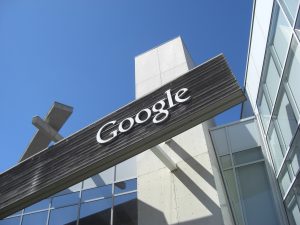Which Should Come First? LTE Tech or Devices?
![]() Long Term Evolution (LTE) 4G is probably one of the top things you hear about when talking about the latest in smartphones, tablets, and of course, communication. So what exactly is LTE and what’s it matter? Simply put, LTE allows one to experience faster mobile internet, mobile download, mobile video watching and anything that has to do with using an internet on your mobile device. And since everyone relies on their mobile gadgets, device manufacturers and service providers are doing the best they can to be able to utilize and make LTE available to the public. As consumer data usage increases across carriers, each finding their own ways to monetize these trends, it’s an important technology to watch.
Long Term Evolution (LTE) 4G is probably one of the top things you hear about when talking about the latest in smartphones, tablets, and of course, communication. So what exactly is LTE and what’s it matter? Simply put, LTE allows one to experience faster mobile internet, mobile download, mobile video watching and anything that has to do with using an internet on your mobile device. And since everyone relies on their mobile gadgets, device manufacturers and service providers are doing the best they can to be able to utilize and make LTE available to the public. As consumer data usage increases across carriers, each finding their own ways to monetize these trends, it’s an important technology to watch.
One specific case is that of AT&T’s goal to acquire T-Mobile for their LTE expansion in rural parts of the US. The company wants to focus more on expanding LTE coverage rather than focusing on devices that are LTE capable or ready, as some say that it is better to buy 4G products when you can use it anywhere rather than searching for LTE hotspots just so you can enjoy, use or experience what LTE has to bring. Some companies have already announced that their 4G devices will be released on AT&T when the service is already available like HTC’s tablet, and the HP TouchPad also chose AT&T to be the carrier for their tablet. AT&T aims to have 15 LTE markets and up to 75 million POPs (points of presence) at the end of this year.
“Our first rollout of course will be more with data cards, but we anticipate we’ll have at least a smartphone by the end of the year,” said Pete Ritcher, CFO at AT&T, at the Oppenheimer Technology & Communications Conference in Boston.
As for Verizon, they entered the 4G market December last year and was the first carrier to launch this service. They have already lit up 102 LTE regions, with aims to increase this to 175 markets before the year ends. The carrier already has three supported devices: the LG Revolution, HTC Thunderbolt, and Samsung Droid Charge that are 4G ready, and Motorola’s Droid Bionic, a dual-core LTE phone is expected to launch in September.
And it’s not just the US that’s seeing an LTE boom. Scandinavia has also jumped on the bandwagon as they deployed 4G and LTE services with Cisco Mobile Solutions.
Joergen Askeroth, chief technical officer, 3 Scandinavia “We strive to offer innovative services that appeal to all of our customers. 4G and LTE are services our customers rely on greatly to share and view mobile video and data. The Cisco ASR 9000 Series Routers and Cisco Move framework help enable us to provide customers a consistent mobile Internet experience.”
![]() Apple is also rumored to be releasing a 4G iPhone, which is hoped to be the iPhone 5, though some are saying that this would not be possible as LTE chips are really thick and would not fit in the iPhone’s current casing. MediaTek, a major provider for mobile phone chips in China, is set to trial their 4G LTE Time-Division Duplex phone in China though the phone is still in its testing phase.
Apple is also rumored to be releasing a 4G iPhone, which is hoped to be the iPhone 5, though some are saying that this would not be possible as LTE chips are really thick and would not fit in the iPhone’s current casing. MediaTek, a major provider for mobile phone chips in China, is set to trial their 4G LTE Time-Division Duplex phone in China though the phone is still in its testing phase.
And finally, LightSquared, the nation’s first wholesale-only integrated 4G-LTE wireless broadband and satellite network, and EarthComm Solutions, an experienced communications service provider for businesses and consumers, announced that they have entered into a multi-year wholesale agreement.
“At EarthComm Solutions, our mission is to provide the most affordable and advanced communications services available in the market to our customers,” said Russell McNorton, chief executive officer of EarthComm Solutions. “With LightSquared, we have found a superb wholesale 4G-LTE network provider and we are very excited to enter this partnership.”
“EarthComm Solutions is an experienced service provider, and we look forward to providing this successful company the highest value 4G-LTE wholesale network service available to enable their innovative mobile broadband offerings,” said Sanjiv Ahuja, chairman and chief executive officer of LightSquared. “With this agreement, LightSquared is continuing to foster competition and innovation while enabling EarthComm Solutions to deliver competitive wireless offerings through its established distribution network.”
LTE is clearly something that would benefit mobile internet users, especially when it becomes available beyond select areas. The question comes down to which should really come first? the LTE market or hotspots or LTE devices? For me, the expanding the service should come first so people don’t end up buying a pricey device that they can’t use the LTE because the service is unavailable in their area. Just a thought.
A message from John Furrier, co-founder of SiliconANGLE:
Your vote of support is important to us and it helps us keep the content FREE.
One click below supports our mission to provide free, deep, and relevant content.
Join our community on YouTube
Join the community that includes more than 15,000 #CubeAlumni experts, including Amazon.com CEO Andy Jassy, Dell Technologies founder and CEO Michael Dell, Intel CEO Pat Gelsinger, and many more luminaries and experts.
THANK YOU













